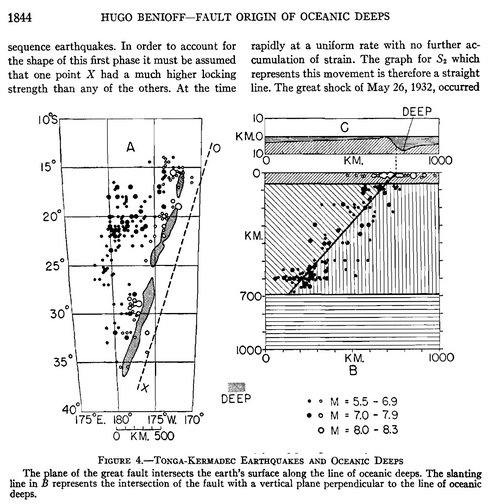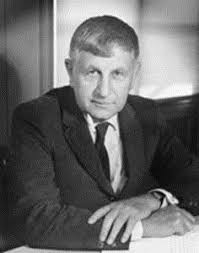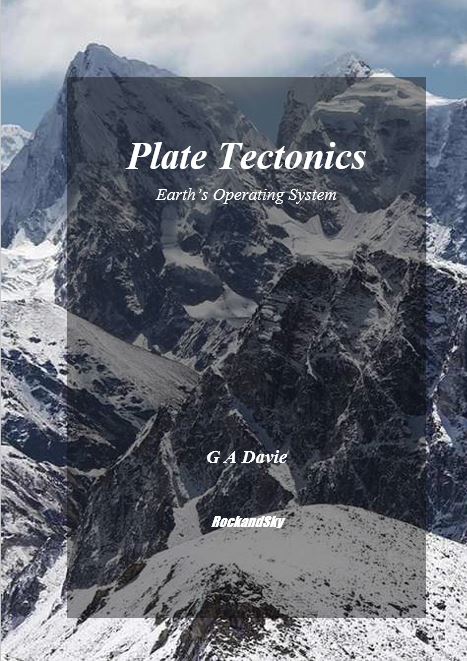The Expanding Earth Theory - A Moment of Madness
Some mad theories had been proposed to explain the dynamics of the Earth. New crust was being created at the spreading centres - a range of mountains that circled the entire planet - but which lay along the centres of the oceans. If new crust was being formed at these spreading centres, then the world had to be expanding, or so one theory went. However there was one man ahead of the game, although at the time he didn't realise the significance of his findings. Read on to find you how Hugo Benioff provided one of the key insights into the new theory of plate tectonics.

The Tonga-Kermadec Trench, South Pacific
It is 1949, and seismologist Hugo Benioff has just published a scientific paper, showing plots of the location and depth of the epicentres of earthquakes. One set of data is from the west coast of South America and another from the Tonga- Kermadec Trench, which runs from New Zealand up through the Pacific to Samoa. His paper is titled “Seismic Evidence for the Fault Origin of Oceanic Deeps” and includes cross sections through the trenches, showing the location and depth of the earthquake epicentres. He has discovered that there is very little seismic activity along the immediate axis of the trench, but moving towards the land in the case of South America, or the islands in the Pacific case, earthquake activity increases, along with the depth of the earthquakes. The plot looks like this:

He theorised that these trenches were fault zones which extended some 700 km into the crust, and that the earthquakes were due to the sticking and sudden release of stress along these fault planes. He was ahead of the game, but when plate tectonics came of age, it was realised that those trenches, or foredeeps as they are also known, were the locations of subduction zones where oceanic crust was being destroyed. This was a vital component of the theory, because the size of the Earth was fixed and to create new crust along spreading centres required a corresponding destruction of crust elsewhere.
Otherwise there would be a need to invoke strange theories to explain things – like the ‘expanding earth theory’ which did have its adherents back in the day. Now there was no need for crazy ideas – it was all so very elegant - new crust was created at spreading centres and destroyed along Benioff Zones. Japan’s Kiyoo Wadati had independently come up with exactly the same theory at the same time, and these subduction zones are now known as Wadati-Benioff Zones.

Hugo Benioff

Kiyoo Wadati
We have put together a fantastic book on Plate Tectonics which you can get here.
Join us on this adventure
We are busy putting together various courses on all things geographical, one of which is Plate Tectonics. It is a fascinating topic, so if you would like to be informed when we launch the course, please leave your details. It's going to be a grand tale of voyages out on the blue Pacific, of infighting in the laboratories, of scientists collaborating when they weren't fighting, all set against the backdrop of erupting volcanoes, devastating earthquakes and the collision of continents. Hang onto your seats, for it is going to be quite a ride!
A promise. We will not share your details with 3rd parties, spam you or send you dodgy stuff. However we may send you promotional material pertaining to our new courses and field trips.
If this resonates with you and you think it may be valuable to others, please share, and leave your comments in the box below.
So looking forward to adventuring with you


